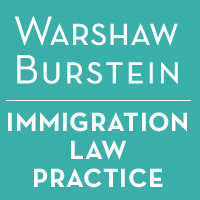Positive Policy Changes Instituted for H-4, L-2 and E-1/E-2/E-3 Dependent EAD Workers
12/03/2021On November 12, 2021, the U.S. Citizenship and Immigration Services (USCIS) began allowing automatic extensions of employment authorization where an Employment Authorization Document (EAD) renewal application has been filed and is pending with USCIS for H-4, L-2, and now E-1/E-2/E-3 dependent (“E-Dependent”) spouses. The USCIS has also changed its policy and will soon allow employment authorization incident to status for L-2 and E dependent status holders. As a result, L-2 and E-Dependent spouses will no longer have to apply for an EAD card to be authorized to work in the United States.
Specifically, H-4, L-2 and E-Dependent spouses will qualify for automatic extension of their valid EAD for 180 days beyond the date of the EAD expiration if the nonimmigrant spouse:
- Properly files a Form I-765 EAD renewal application to USCIS before the current EAD expires; and
- Continues to maintain H-4, L-2 or E-Dependent status beyond the expiration of the existing EAD as evidenced on Form I-94.
The validity of the expired EAD will be extended until the earliest of:
- 180 days following the EAD expiration;
- The expiration of the H-4/L-2/E-Dependent nonimmigrant’s I-94 record; or
- When a final decision is made on the EAD extension application by USCIS.
USCIS’s new policy also states that both L-2 and E-Dependent spouses will be employment authorized incident to status. This means that a separate Form I-765 EAD application will not need to be filed to obtain work authorization, and that the L-2 or E-Dependent spouse is authorized to work upon being admitted to the United States (or upon approval of an I-539 extension of status application).
USCIS will also change the format of the Form I-94 to indicate that the individual is an L-2 or E-dependent spouse so that the I-94 can be used for I-9 purposes. However, it should be noted that until USCIS can make the necessary changes to the I-94 form to note this distinction, E and L status spouses must continue to use an EAD as evidence of employment authorization for employers to complete Form I-9.
Note that there are still remaining obstacles to these status holders as those with pending I-539 applications whose I-94 has expired were not granted this automatic extension by these new policies. Therefore, the immigration bar is working with USCIS to rectify these remaining issues. However, these new policies even as currently constituted will still have a positive effect as they will relieve much of the backlog previously plaguing the USCIS adjudication system and will provide EAD applicants in these categories with immediate and much-needed relief from fear of losing employment due to bureaucratic delays.
